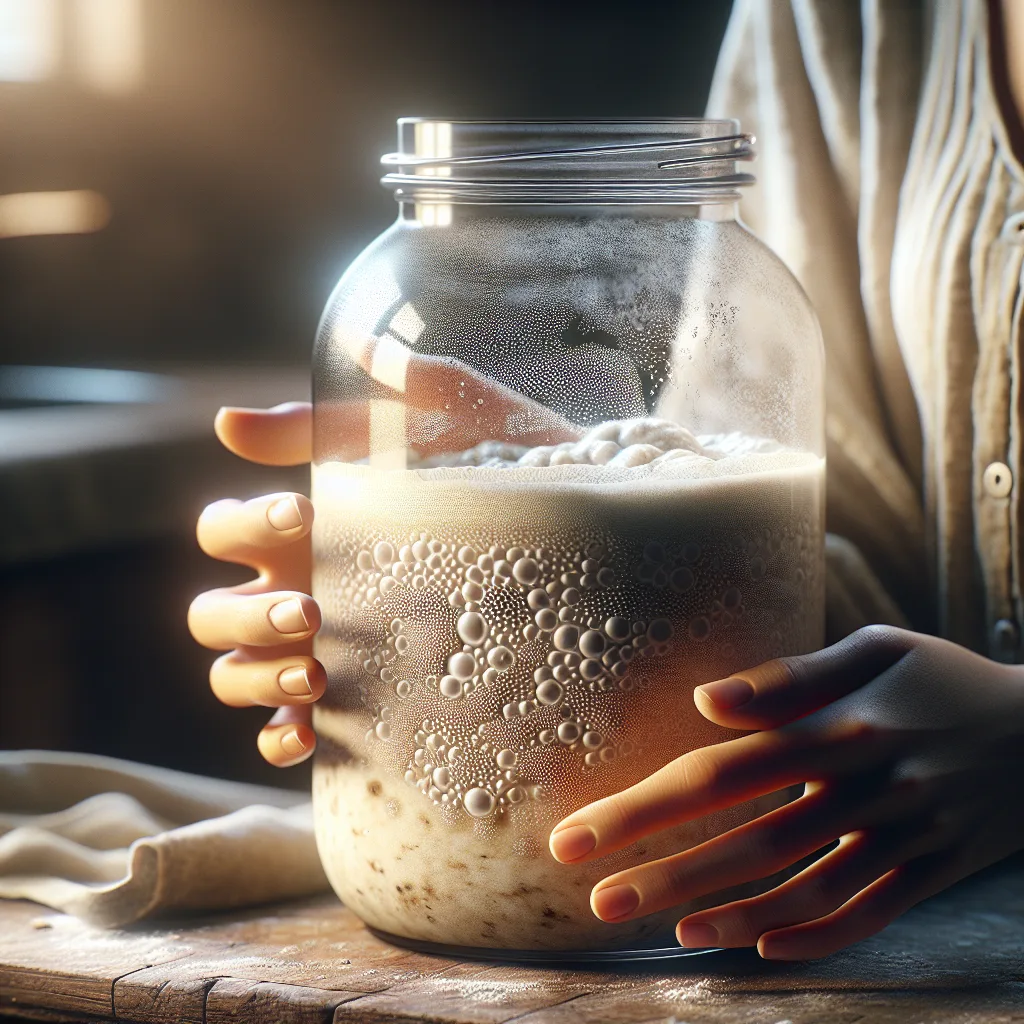Thinking about making a sourdough starter? Here’s a real, honest story about the process, the failure, and the moment it finally comes to life.
It started with a jar.
A simple, empty glass jar on my kitchen counter. My plan was to create a sourdough starter. You know, like all those people on the internet with their perfect, crusty loaves of bread. It seemed simple enough. Just flour and water. What could go wrong?
For the first three days, absolutely nothing happened.
I’d mix the flour and water into a sad, grey paste. I’d look at it. I’d stir it. I’d put the lid on loosely, just like the instructions said. And I’d wait. The next day, I’d throw half of it out and feed it again. More flour, more water. More stirring. More waiting.
It felt less like baking and more like a weird science experiment. Or maybe a test of my own patience. My husband would ask, “How’s your flour-pet?” and I’d just shrug. It was a lifeless, goopy mess. I was pretty sure I was just wasting flour.
The First Sign of Life
On day four, I almost gave up. I walked over to the jar, ready to dump the whole thing and reclaim my counter space. But I decided to give it one last look. I picked it up and tilted it toward the light.
And there it was. A bubble.
It was tiny. Almost invisible. But it was undeniably a bubble. It was proof that something was happening in there. All that waiting and feeding—it was actually doing something. Microscopic yeasts and bacteria were waking up and getting to work.
I’m not going to lie, I got way too excited. I yelled, “It’s alive!” to an empty kitchen. I felt like a mad scientist who had finally succeeded. My little jar of paste wasn’t just paste anymore. It was becoming a living thing.
What is a Sourdough Starter, Really?
If you’re not familiar, a sourdough starter is just a community of wild yeast and bacteria. You’re not creating life, but you are capturing it and nurturing it.
The whole process is surprisingly basic:
- You mix: Just flour and water. That’s it.
- You wait: You give the natural yeast in the flour and the air a chance to start multiplying.
- You feed it: To keep the yeast happy, you have to give them fresh food regularly. This involves discarding a portion of the starter and adding new flour and water.
This daily ritual becomes a strange, comforting routine. You get to know your starter. You can see when it’s hungry (it looks flat) and when it’s active and happy (it’s bubbly and doubles in size). Mine started smelling a little like vinegar, then a little like ripe apples. It was developing a personality.
More Than Just Bread
After a week, my starter was strong and bubbly. I finally used it to bake my first loaf of bread. It wasn’t perfect. It was a little dense, a little lopsided. But it was delicious. It had that signature tangy flavor that you just can’t get from a packet of yeast.
But the real reward wasn’t just the bread.
It was the process itself. It taught me a weird lesson in patience. In a world of instant gratification, it’s a strange and wonderful thing to tend to something for a week just to see if it will work. It’s a small, quiet act of creation.
So if you’ve ever thought about it, I say go for it. All you need is a jar, some flour, and a little bit of patience. You might fail a few times. You might feel a little silly feeding a jar of paste. But one day, you’ll look inside and see that first bubble. And trust me, it’s a pretty great feeling.
